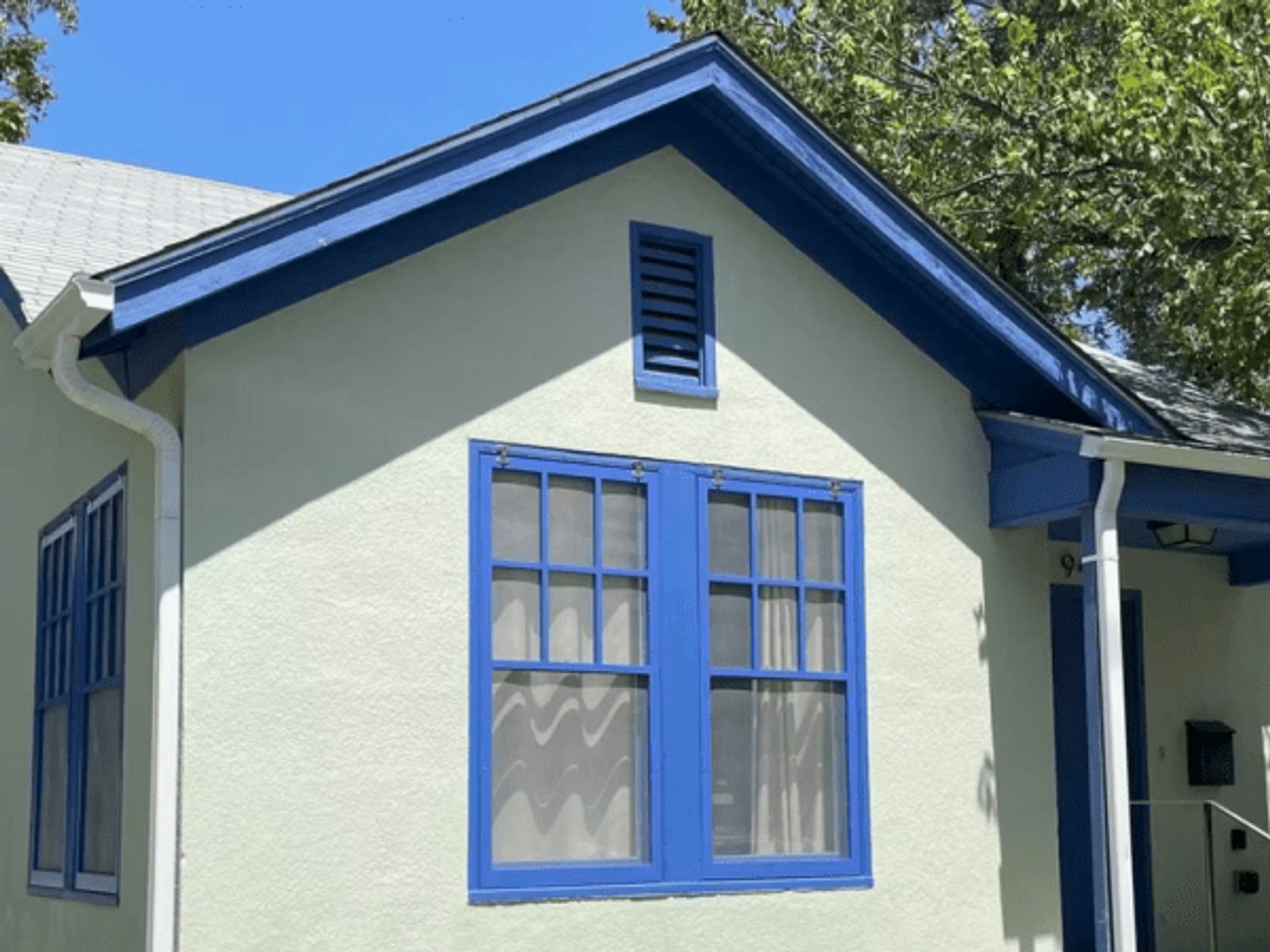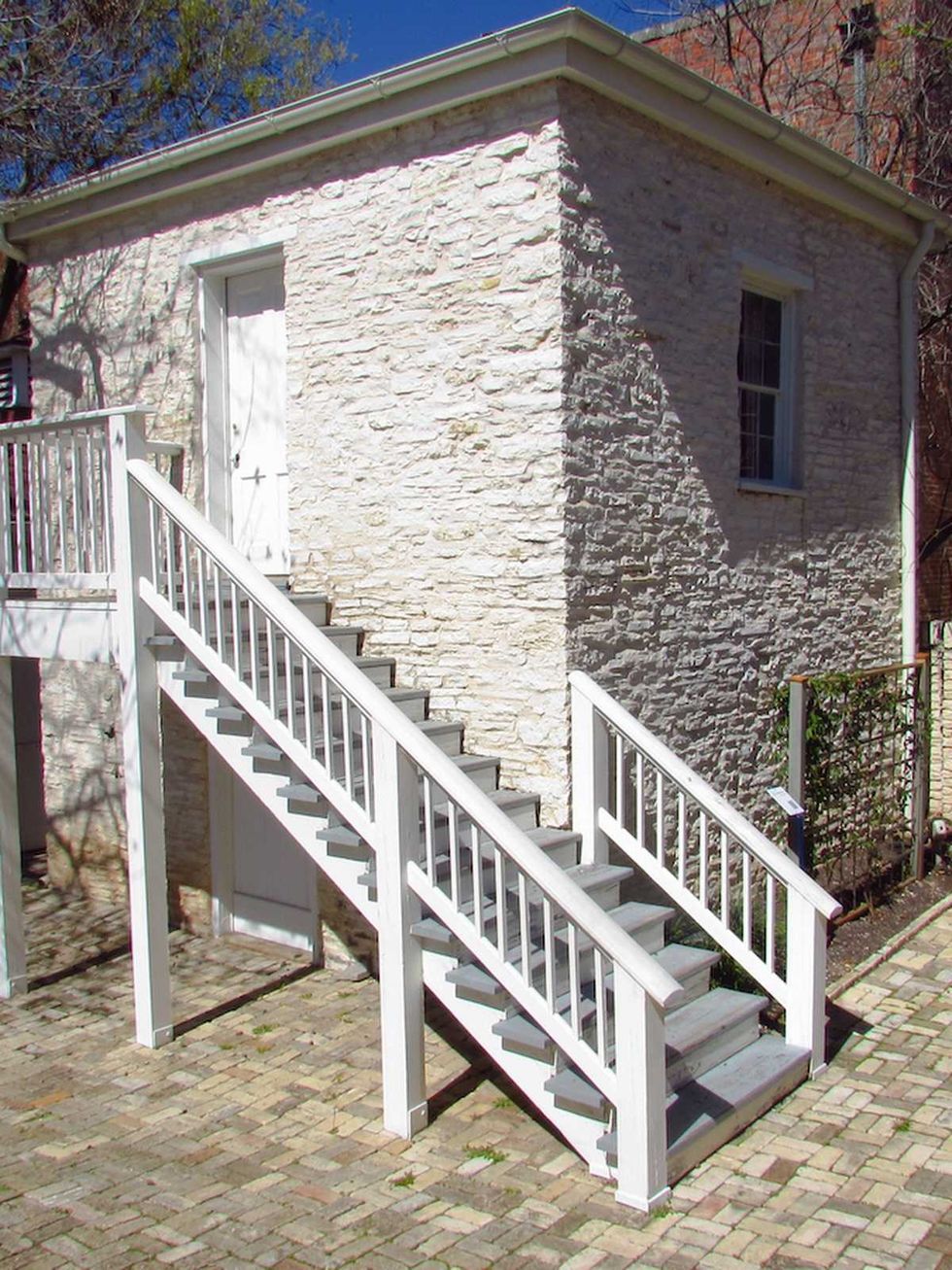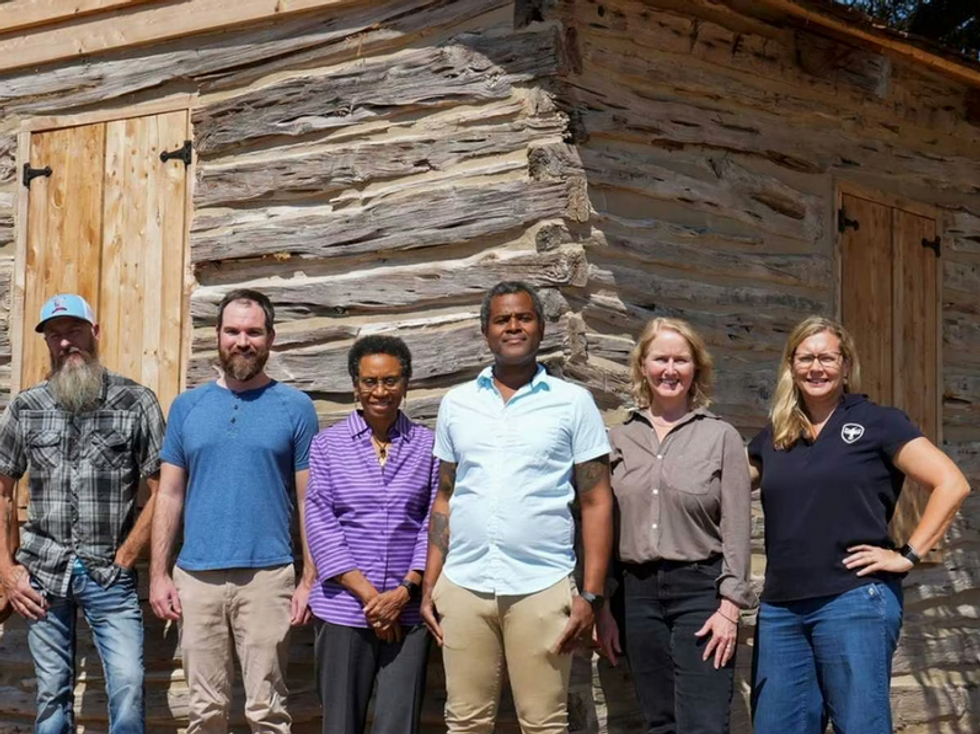Unexpected Art
Landmarks project transforming UT's campus into an all-access open air gallery
 Ben Rubin's And That's the Way It Is
Ben Rubin's And That's the Way It Is Mark di Suvero's Clock KnotPhoto by: Paul Bardagjy
Mark di Suvero's Clock KnotPhoto by: Paul Bardagjy
Ever driven through UT's campus along Dean Keeton and wondered what that strange, sprawling red metal sculpture is perched out on the grassy knoll in front of the UT Engineering complex like an escaped absurdist giraffe?
The sculpture, entitled Clock Knot, is the work of installation artist Mark di Suvero, who employs construction materials to create intricate, 360-degree views of complex engineering properties. The piece, which can be appreciated differently from every angle it is seen, evokes a large-scale three-dimensional representation of a statics diagram, using the beams to represent the lines drawn in space.
Di Suvero's piece was the first of 31 modern and contemporary sculptures that were lent to the Landmarks program (largely by the Metropolitan Museum of Art) to liven up the dialogue of the campus landscape beginning in 2008. Positioned throughout the campus to maximize visibility and context, these pieces range widely in size, structure and material.
What all of the pieces share, however, is the intention to introduce works of art into our everyday lives. "It's our mission to raise awareness and appreciation of all art in Austin. As the university is so central to the city, it's our goal of building a world-class public art collection that everyone can enjoy," says Leah Griffin, Public Relations liaison for Landmarks.
Some of the sculpture pieces, like Anthony Caro's modestly sized steel construction, Veduggio Glimpse, outside Goldsmith Hall, blend more readily into their surroundings. Others, like Joel Perlman's Square Tilt, outside the Perry Castañeda Library (PCL), are impossible to pass over without at least wondering what it might represent.
Landmarks' latest commissioned work definitely falls under the latter category. If you happen to be in the newly-christened Walter Cronkite Plaza that joins the University's communication arts buildings after dark, you cannot help but notice this impressive new video display work.
Activated only after dusk, sound and video artist Ben Rubin's And That's the Way It Is is a complicated video installation that projects real-time nightly news transcripts as well as Cronkite-era news stories on to the intersecting concrete window lattices of the College of Communication (CMA) building.
Using an archival program formulated by his team at EAR Studios in New York, Rubin has developed a program that breaks both time periods' news stories into 2-3 minute "clips" that continuously scroll across the architecture's south face. The constant feed of the two fonts — Verdana for the present-day stories and Courier for the classic — mimics the busy, intermingling flow of information within a newsroom, a studio or a communication classroom.
"The layering of information — textual and visual, contemporary and historical, immediate and distant — evokes an awareness of current news trends and intellectual patterns," explains the Landmarks website. "The speed and immediacy of real-time fragments heightens the viewer's anticipation from one composition to the next, while the insertion of historical phrases activates a dialogue between the past and present."
Originally launched in April 2012 in order to capitalize on the excitement of the Cronkite Plaza commemoration ceremony, Rubin is currently back in Austin updating the system and expanding the logarithm that collects and translates transcripted news feeds from present-day newscast. The time spent between April and July also allowed Rubin and his team to greatly expand the amount of translated archival material from the Cronkite era as well.
"It's an exciting time over in that quadrant of campus as well," notes Landmarks Assistant Director Nisa Mason. "With the new Belo Center for New Media opening this year, this is the perfect time to breathe new life into the former Communication building as well."
In September of 2010, Landmarks commissioned multimedia artist David Ellis to create the collection's first video work which corresponded with the opening of the new Visual Arts Center (VAC) on campus. After a six week residency in the UT Art + Art History Department, he produced a 9 1/2 minute "motion painting" entitled Animal, which is still on display in the Art Building atrium.
Whether you're a regular purveyor of fine art or just curious to unpack the hidden secrets our city holds, the Landmarks project is a free hidden gem in the heart of Austin.
---
The Landmarks website provides a comprehensive interactive map of all of their current pieces for self-guided tours. Public tours and bike tours are also led by docents every third Sunday of the month at 1 p.m.

 The Neill-Cochran House Museum's mid-19th-century slave quarters received Planning and Historic Designation grant support for restoration and historical interpretation.Photo courtesy of Preservation Austin
The Neill-Cochran House Museum's mid-19th-century slave quarters received Planning and Historic Designation grant support for restoration and historical interpretation.Photo courtesy of Preservation Austin Built around 1863, the Henry G. Madison cabin in Rosewood Park received Bricks and Mortar grant support for preservation planning work.Photo courtesy of Preservation Austin
Built around 1863, the Henry G. Madison cabin in Rosewood Park received Bricks and Mortar grant support for preservation planning work.Photo courtesy of Preservation Austin